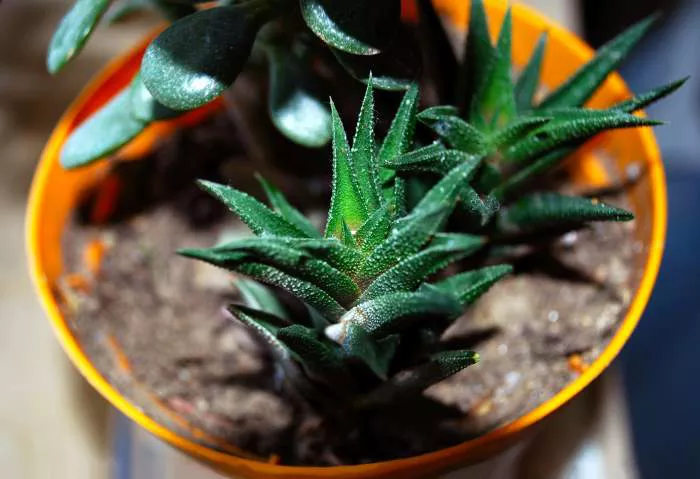Split rock succulents, scientifically known as Pleiospilos nelii, are fascinating plants native to South Africa. They are known for their unique appearance, resembling small rocks with a split down the middle. This adaptation helps them survive in their native arid environments. Propagating split rock succulents can be a rewarding endeavor for both beginners and experienced gardeners. This article will guide you through the process of propagating split rock succulents effectively.
Understanding Split Rock Succulents
Before diving into propagation methods, it is essential to understand the characteristics of split rock succulents. These plants feature thick, fleshy leaves that store water, allowing them to thrive in dry conditions. They typically grow in pairs, with the split between the leaves resembling a fissure. This unique structure not only aids in water retention but also helps the plant camouflage among rocks in its natural habitat.
Propagation Methods
There are two primary methods for propagating split rock succulents: leaf cuttings and offsets. Each method has its advantages, and the choice depends on the specific plant and the gardener’s preference.
Propagating from Leaf Cuttings
Leaf cuttings are a common way to propagate many succulent varieties, including split rock succulents. Here are the steps to follow.
Select Healthy Leaves
Choose healthy, mature leaves from the parent plant. Look for leaves that are firm and free from any signs of disease or damage. Avoid using leaves that are shriveled or discolored, as they may not root successfully.
Prepare the Cuttings
Using a sharp, clean knife or scissors, carefully cut the selected leaves from the plant. Make sure to cut them at the base where they attach to the stem. Allow the cuttings to dry for a few days in a shaded area. This drying process helps form a callus over the cut surface, which reduces the risk of rot when planted.
Plant the Cuttings
After the cuttings have calloused, prepare a well-draining soil mixture. A cactus or succulent potting mix is ideal. Fill a small pot with the soil and create small holes for the cuttings. Place the calloused end of each leaf cutting into the soil, ensuring it is secure but not buried too deep.
Watering the Cuttings
Water the soil lightly after planting the cuttings. It is important not to overwater at this stage, as the cuttings are still vulnerable to rot. Allow the soil to dry out completely between waterings. Depending on environmental conditions, the cuttings may take several weeks to develop roots.
Provide Proper Conditions
Place the pot in a warm, bright location with indirect sunlight. Avoid direct sunlight, as this can scorch the cuttings. Maintaining a temperature between 65°F and 75°F (18°C to 24°C) will encourage healthy growth.
Propagating from Offsets
Offsets are small plants that grow at the base of the parent plant. They can be separated and planted to create new plants. This method is often quicker and easier than leaf cuttings.
Identify Offsets
Look for offsets that are large enough to be separated from the parent plant. These offsets will usually have their own roots and can be identified as small rosettes at the base of the main plant.
Remove the Offsets
Carefully remove the offsets from the parent plant. Use a clean knife or scissors to cut them away, ensuring you do not damage the roots. If the offset is small and has no roots, it may still root successfully, but larger offsets with roots are more likely to thrive.
Prepare the Soil
As with leaf cuttings, prepare a well-draining soil mixture. Plant the offsets in a small pot filled with the soil, ensuring that the roots are covered and the plant is stable.
Watering the Offsets
Water the newly planted offsets lightly. Similar to leaf cuttings, allow the soil to dry out completely between waterings. Monitor the offsets for signs of growth, which indicates successful rooting.
Provide the Right Environment
Place the pot in a bright location with indirect sunlight. Maintain a warm temperature to encourage growth. Offsets typically root more quickly than leaf cuttings, so you may see new growth within a few weeks.
Caring for Newly Propagated Plants
After propagating split rock succulents, it is essential to provide proper care to ensure their health and growth.
Watering Routine
Once the new plants show signs of growth, you can gradually increase the watering frequency. Water thoroughly, allowing excess water to drain out. Always check the soil moisture before watering to prevent overwatering.
Light Requirements
As the plants grow, ensure they receive adequate light. While they prefer bright, indirect sunlight, they can tolerate some direct sunlight. Gradually acclimate them to brighter conditions to avoid sunburn.
Fertilization
During the growing season, you can fertilize split rock succulents with a diluted cactus fertilizer every four to six weeks. This will provide essential nutrients for healthy growth. Avoid fertilizing during the dormant season in fall and winter.
Common Challenges
While propagating split rock succulents is generally straightforward, some challenges may arise.
Rotting
Overwatering is the most common issue when propagating succulents. If you notice any signs of rot, such as mushy leaves or a foul smell, reduce watering immediately. Remove any affected parts and allow the plant to dry out.
Pests
Keep an eye out for pests such as mealybugs and aphids. These can damage your succulent and hinder its growth. If you notice any pests, treat the plant with insecticidal soap or neem oil.
Conclusion
Propagating split rock succulents can be a rewarding experience. Whether using leaf cuttings or offsets, following the proper techniques will increase your chances of success. Understanding the plant’s needs and providing the right care will ensure healthy growth and vibrant plants. With patience and attention, you can expand your collection of these unique and beautiful succulents.
Related topic:


